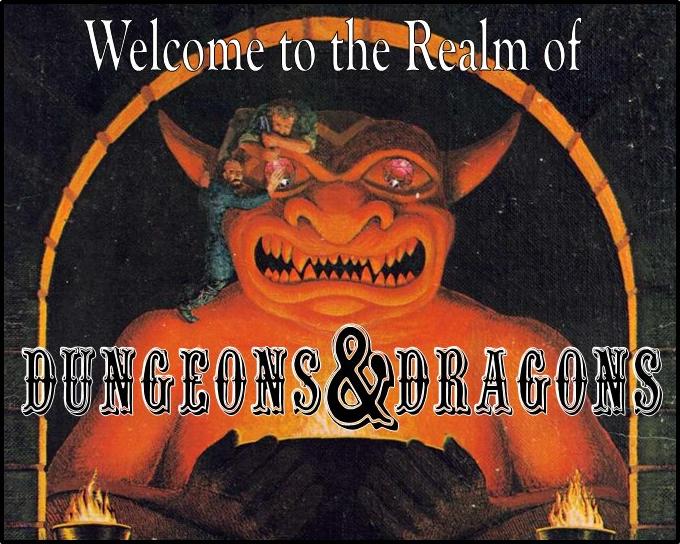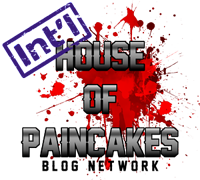Castles and Crusades at its core, does not allow Multi Classing - there have been quite a few fan rulings for it - even notes by the great man himself. But nothing either concrete or (IMHO) playable. The official rules, from the new 4th Printing, are unworkable IMHO - and need some attention. For Multi-Classing to truly work, the Attribute system of Primary and Secondary attributes needs to be addressed.
Primary, Secondary, Tertiary AttributesIn Castles & Crusades the Primary Attribute concept is introduced, challenges associated with a Primary attribute are set at 12+. All other attributes have the base challenge levels set at 18+.
There are no averages, no middle ground - you are either talented at something or you struggle. So here is introduced the idea of Tertiary Attributes. We all know how Prime attributes work, with the base challenge level being set at 12+.The idea behind this is simple - rather than all other attributes being set at 18+, Secondary attributes have a base challenge level now set to 15+, and Tertiary have a base challenge level of 18+.
Humans pick three Primes, two Secondary’s, and one Tertiary. Non-Humans pick two Primes, three Secondary’s, and one Tertiary. This way Non-Humans aren’t quite as penalized, and you get a more realistic spread (the Saving Throws for example are more in line with AD&D). However, ONE of your choices still has to be the Prime of the main Class you have chosen.
This allows us to have proper multi-classing rules. As we only allow non-humans to multi-class (its all based on 1st Edition AD&D) - non-humans only having two Primary Attributes becomes a problem.
If a multi-class option is taken, and the prime attribute for that class is a secondary attribute - then a 10% tithe is placed upon all EEP (or XP) that is applied to that class (so deduct 10% before applying it to your EPP (XP) total for that class) - if a multi-class option is taken, and the prime attribute for that class is a tertiary attribute - then a 25% tithe is placed upon all EEP (or XP) that is applied to that class (so deduct 25% before applying it to your EPP (XP) total for that class).
Now the 25% penalty might seem harsh, but its there for a reason - to DISCOURAGE a player from taking a Class with a tertiary attribute - JUST BECAUSE HE (OR SHE) can - we've all encountered such discommodious players.
There is specific information about the interaction of the restrictions and abilities of Multi-Classed Characters. Gnomish Multi-Classed characters are (for example) limited to Leather Armour in order to cast spells, while Elven Multi-Classed Characters are not. These restrictions reflect the particular nature of the non-human races. It is a general rule however, that a Cleric/Fighter may always use edged weapons. When a non-human character has more than one character class, any experience points gained by the character will be divided evenly between those classes, once the character can no longer progress in one of the classes this splitting of XP ends – and the XP is given in its entirety to the Class the character may still advance in.
• Multi–classed characters use the least restrictive weapons list for their classes.
• Multi–classed characters use the most restrictive armour list of their classes.
• Multi–classed characters cannot combine abilities.**
• Starting gold is determined by rolling for each class individually, combining the results and dividing that by the number of classes the character has.
**For example, a fighter’s extra attack means that the character can make an extra normal attack and not use that extra attack to deflect missiles, make a back attack or inspire.
When the character advances in one of his or her classes, additional hit points are determined by rolling the appropriate die (D4 for Wizards and Illusionists, D6 for Rogues and Assassins, etc.), adding the appropriate constitution modifier, and dividing by the number of Classes involved (so two for a Cleric/Thief, or three for a Fighter/Cleric/Wizard, for example). It is therefore entirely possible for a multi-class character to be at different levels of experience in different Classes. As an example, a Half-Orcish Cleric/Assassin of Level 10/12 is possible.
Dual-ClassingIn order to switch from one class to another, the human character must have an ability score of 15+ in the Classes Prime Attribute of the original Class, and of 17+ in the Prime Attribute of the new Class.
The character retains his or her Hit Points.
He or she can use the particular abilities of the original class, but doing so will cause the character to forfeit all experience points that would be gained from using the original Classes Abilities (as determined by the GM). This restriction applies until the character has advanced in the new Class to a Level at least one higher than was attained in the original Class.
When the character begins the process of learning a new class, he or she gains the Abilities of the new Class as a First Level member of that Class, and all Experience is applied to progressing in the new class. The Character gains no additional Hit Points until reaching a Level in the new Class one Level higher than in the original Class, after which time the Character’s Hit Points advance as per the new class.
Unlike multi-class characters, dual-classed characters cannot perform the functions of several different classes simultaneously. So, for example, an Elven Fighter/Wizard could cast Arcane Spells while wearing Armour, but a Human Dual-Classed Fighter/Wizard would have to remove his or her Armour to do the same thing. However, with dual-classed characters, any combination of classes is possible, provided the character qualifies in terms of Primary Ability Scores and can comply with any relevant Alignment restrictions. An individual with very high Ability Scores could therefore play a Cleric/Paladin or a Wizard/Illusionist.
If a multi-class option is taken, and the prime attribute for that class is a secondary attribute - then a 10% tithe is placed upon all EEP (or XP) that is applied to that class (so deduct 10% before applying it to your EPP (XP) total for that class) – if a multi-class option is taken, and the prime attribute for that class is a tertiary attribute - then a 25% tithe is placed upon all EEP (or XP) that is applied to that class (so deduct 25% before applying it to your EPP (XP) total for that class).
Now the 25% penalty might seem harsh, but its there for a reason – to DISCOURAGE a player from taking a Class with a tertiary attribute – JUST BECAUSE HE (OR SHE) can – we've all encountered such discommodious players.
Restrictions • Dual–classed characters take the best to hit bonus of their classes.
• Dual–classed characters use the least restrictive weapons list for their classes.
• Dual–classed characters use the most restrictive armour list of their classes.
• Dual–classed characters cannot combine abilities.***
***For example, a fighter’s extra attack means that the character can make an extra normal attack and not use that extra attack to deflect missiles, make a back attack or inspire.
Skills & Saves for Multi-Class /Dual Class CharactersWhen it comes to Saves and Tasks involving your Level, you use the Appropriate Level. Aladon is about to Pick a Lock. Aladon is a 3rd Level Thief/2nd Level Wizard. He would use his Rogue Level when rolling to pick the Lock. Likewise, to make an INT based Saving Throw vs. a Spell – Aladon would use his Wizard Level as INT is a Wizards Prime Attribute.
 Begin an epic journey in the rugged boots of the most unlikely heroes. Enter the world of the Harvesters where badgers, rabbits, squirrels, and otters launch into adventures of epic wonder. Here the smallest of creatures take on the roles of the greatest heroes: knights, druids, clerics, rogues, wizards, and fighters. Together they tackle the greatest of adventures, from rescuing the princess to find a lost treasure. Harvesters is a game for the child in all of us!
Begin an epic journey in the rugged boots of the most unlikely heroes. Enter the world of the Harvesters where badgers, rabbits, squirrels, and otters launch into adventures of epic wonder. Here the smallest of creatures take on the roles of the greatest heroes: knights, druids, clerics, rogues, wizards, and fighters. Together they tackle the greatest of adventures, from rescuing the princess to find a lost treasure. Harvesters is a game for the child in all of us! 


